The Best Headphones for Mixing (…And Mastering?)
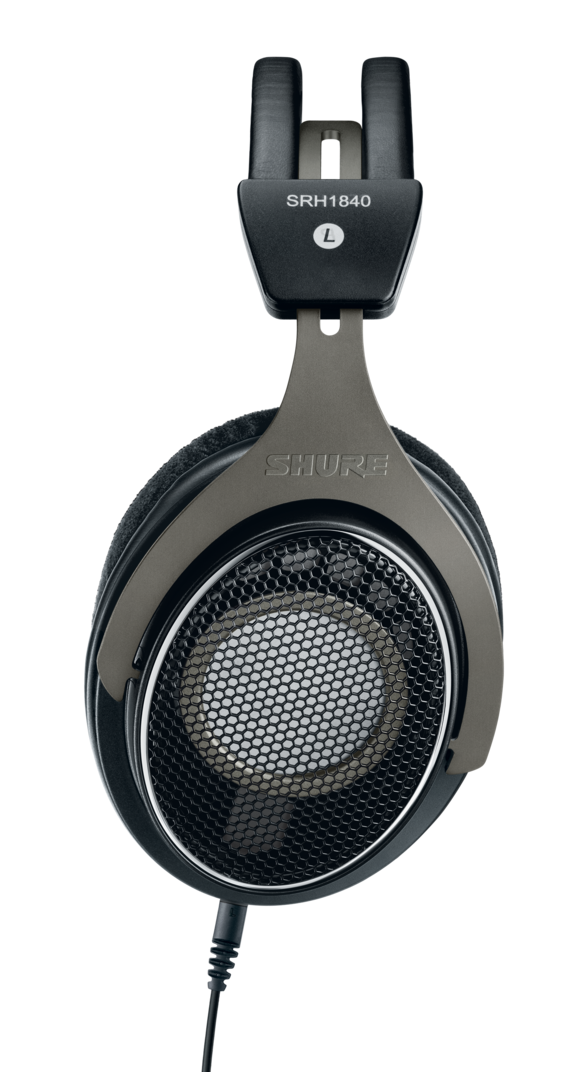
The Shure SRH 1840 are one of several models that get exceptionally good marks in this high-quality headphone roundup.
Headphones have come a long way in recent decades. “They” say you should never mix exclusively on headphones, and “they” are probably right.
But in evaluating some of the latest top-of-the-line models, I was amazed at just how much you can learn to trust some of the very best pairs that are on the market today.
Despite my initial skepticism, I even found a pair of headphones that I found I could reliably use to make mastering revisions on real commercial projects, without even turning my speakers on, with totally usable results time and time again.
Impossible? I thought so. But apparently not. You’ll find them in the list below.
Of course, I should throw out all the necessary disclaimers: I’m just the same as “them”. I too will tell you that you should never make critical or final mix decisions or revisions using nothing but headphones.
…But we both know that you’re probably going to anyway. At least some of the time. I mean, c’mon. Why else did you click on this article? We’re among friends here. You can be honest with me. I won’t tell anybody.
While there’s no real replacement for always checking your work on a great pair of speakers in a great room, there are simply times when a good set headphones are what you really need.
Sometimes we’re traveling, and find ourselves needing to be productive on a plane or a tour bus. Sometimes we have to get work done at odd hours, or around sleeping babies and cranky neighbors.
And sometimes, we just need another point of reference to tell us something that a compromised room or speaker system can’t. Although speakers are the ideal, when you are in a less-than-ideal room, headphones can potentially tell you things about the stereo field—and even the low end—that even good speakers can’t.
Any of these are excellent reasons to get yourself not just a “good-enough” pair of headphones, but a great one. One you can really trust.
I evaluated more than a dozen of the most popular and most recommended models to narrow things down to a shortlist of some of the very best options, complete with some notes on which ones might be best for you, depending on your needs and tastes. Let’s get into it.
The Criteria
For today’s shootout, I wanted to focus exclusively on open-back headphones. They tend to be the best bet for mixing and critical listening applications.
What open-back models may lack in isolation from the outside world and bleed reduction for super-clean overdubs, they make up for with their superior sonics, particularly in the low end.
As you’ll discover, I allowed one exception to this rule, for a pretty exceptional pair of headphones that feature a unique “semi-open” configuration that relies on dampening to get some of the best of both worlds. More on that in a minute.
None of these headphones are exactly “cheap”, with the least expensive model here clocking in around $300. But fortunately, spending $300 on headphones is a little bit like spending $2000 on speakers. You’re going to be getting something that is certainly of serious professional quality, and if you up your budget from there, you can start getting pretty close to the top of the line for most practical purposes.
This is not to say that spending $300 on headphones is “as good as” spending $2000 on speakers. It’s just that you’re getting something that is much closer to being the best in its category than the worst.
With all that in mind, here’s my list of the top headphones I would trust most for critical listening and serious decision making. Some of these picks are outside of the usual fare, including some sleeper hits that I just can’t recommend enough. I’ve even included an option that I’ve found I could actually learn to trust in my mastering work, for evaluating low frequencies when on the road—no small task for a pair of headphones!
Did I miss any of your favorite models? If there’s a pair of truly butt-kicking headcans that I neglected to mention, I want to hear about them below. I might just have to try them out… if I haven’t already. We’ll start with one that I never would have expected to be such a serious contender.
Winner: Best Bottom / Most Useful Low End
Blue Mix-Fi $300
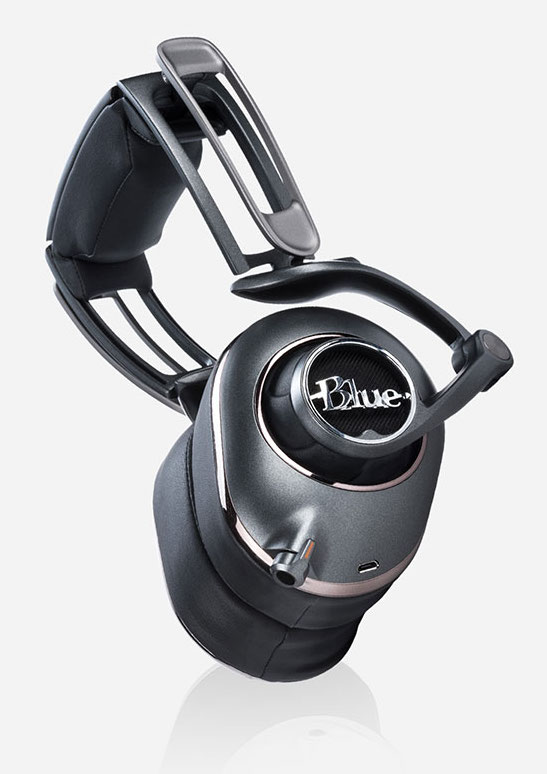
The Blue Mix-Fi Headphones are affordable, but don’t let that fool you. They have remarkably useful and resonance-free low end for headphones at any price.
Some of my personal favorite headphones on this list took me completely by surprise.
When I first got a demo version of the Blue Mix-Fi headphones to try out, I let them sit on the shelf, unopened, for months. To be honest, they looked a little weird to me. I couldn’t tell if they were open back or closed, and I assumed, based purely on aesthetics, that they would be all hype and no substance. Boy was I wrong.
The Blue Mix-Fi headphones absolutely blew me away from the very first listen. I found this especially surprising because they are nowhere near the most expensive model on this list! In fact, they are among the less expensive entries here. But from moment one, I experienced something that I am not accustomed to on anything but great high end speakers: I could not only hear the bass, but I could feel it.
And I don’t mean that I could “feel” the bass in a “totally hyped up to make you bang your head” kind of way. Not at all. The bass here is remarkably free of resonances for a pair of headphones, and there is actually some truly useful information going on in the low frequencies in these.
I’m not just talking about the upper bass here, either. I’m talking about the very low lows. I was surprised to find that I have come to trust the low end response of these headphones so much that I am comfortable making critical listening decisions about the bottom end in them. This is true even for the subs, down as low as 55Hz-65Hz or thereabouts. This is extremely unusual for any kind of headphone—especially without resonance issues. Color me impressed.
On several occasions, I was able to do mastering revisions using nothing but these headphones—including choices about the low frequencies—and then take them off, only to find that my choices would have been no different on my main speakers. This astonished me more than anything else.
Are the lows perfectly flat? No, the lows in headphones never will be, even if you spend 5 times as much as you might on these. I’d estimate that the low end here is slightly highlighted, if anything. But this feels like a useful feature more than “hype” to me, especially because the lows here are remarkably clean and surprisingly free from resonances. These are indeed some of the most useful lows I’ve ever encountered in a pair of headphones, even when compared to some more commonly encountered models that cost more.
Bottom line: If you don’t want to spend a lot, and your primary need for headphones it to double-check low end in a compromised room, then these are probably the headphones I’d recommend first.
There’s something else that is remarkable about these headphones too: They are technically not an open-back model. Rather, they are what I would call a “semi-open” design. They rely on a dampening system to deliver clean, resonance-free lows rather than an open back. This means that you get some of the extreme isolation from outside distractions that you’d expect from closed back headphones, so you can even record while wearing them without worrying about silly amounts of bleed like you usually would with normal open-back designs.
As mentioned, the Mix-Fi headphones are remarkably inexpensive for their performance. At only $300 they’re among the least expensive entry on the list.
Okay, with all those raves, is there anything I don’t like about them? Unfortunately, yes. I’ll be the first to admit that despite all of these great points that made me fall in love with the Mix-Fi model, they look… well… kinda…. um…. “silly” is the nice word for it.
There, I said it. When I put these things on, I look like an air traffic controller. And as much I respect the company for their novel aesthetics, some of the BLUE designs are just a little far-out for my more “classic-y” tastes.
These are also some of the heavier headphones on this list. Fortunately, thanks to some excellent ergonomic design, they don’t feel uncomfortable at all, even over very long periods. If anything, they feel pleasantly “substantial”, and I found that I can wear these for hours without issue. I would just keep the headbanging to a minimum.
Of course, all these are my personal aesthetic judgements, and yours may be different. They’re not deal-breakers, even for me. And if you have more futuristic tastes (or a slightly larger head) than I, you may find that the look of them suits you just fine. But as far as my tastes go, I only wear these in the studio. I just wouldn’t feel right rocking them in the street or on the subway. But maybe I’m a square.
Finally, for some tastes, the top end on these could seem a little bit dark—particularly with the amp turned off. But for me, this is a feature rather than a bug, especially when it comes to long stretches of critical listening.
If you like the idea of a dark and smooth top with full low end, which reveals lower bass problems while encouraging you to push the top end a bit more, then these could be great for you. But each person’s tastes are different, and if you prefer a little bit more clarity, detail, and sparkle on top, you might prefer other headphones on this list.
Blue has also more recently developed a planar magnetic version of this design, called the Ella, that sounds superb. It’s also slightly smaller and lighter weight.
The Ella has even more high frequency detail than the Mix-Fi while still sounding exceptionally smooth. The bass is extremely even on the Ellas, though perhaps slightly less pronounced than in the Mix-Fi. The Ella model may be slightly more “expensive”, “smooth” and “even” sounding—with the tradeoff being that it lacks just a little bit of the beefy, subby fullness of the Mix-Fi, which I found to come so much in handy as a secondary low end reference.
Although the Ellas cost more than twice as much, but if I was listening only for fun, I’d have to admit they sound “better” in some ways. But even with this in mind, I still find the Mix-Fis exceptionally useful, their value is hard to match, their usefulness in double-checking deep lows in compromised environments is superb, and I won’t be giving mine up anytime soon.
There are a few other great attributes to both models, such as the cabling, and the fact that they give you an optional 3-ring 1/8″ connector complete with a microphone and volume control for use with your smartphone.
Theoretically, the built-in amp is nice to have for use with smartphones and the like, but I found that he Mix-Fi could get more than loud enough without it, and I actually preferred the slightly mellower and low-end focused tone of the headphones without the built-in amp engaged.
[Note: There’s also a less expensive version of the Mix-Fi, called the Lola, but these appear to be being phased out, as they are no longer referenced on Blue’s website. The Lola model goes for at least $50 less where you can still find it. They are practically the same as the Mix-Fi, aside from the omission of the onboard amp found in the Mix-Fi model—which I don’t use anyway. If you want to save a few bucks, they could be a good buy.]
Pros: Great value, amazing low end for headphones. Offers the resonance-free performance of open-back coupled with acoustic isolation of closed back.
Cons: Unusual “love it or hate it” aesthetic design, Somewhat larger and heavier than other options. Could sound a little “dark” in the top end for some tastes, particularly without the built-in amp engaged.
Winner: Most Luxurious / Most Fun
Focal Clear Professional $1500
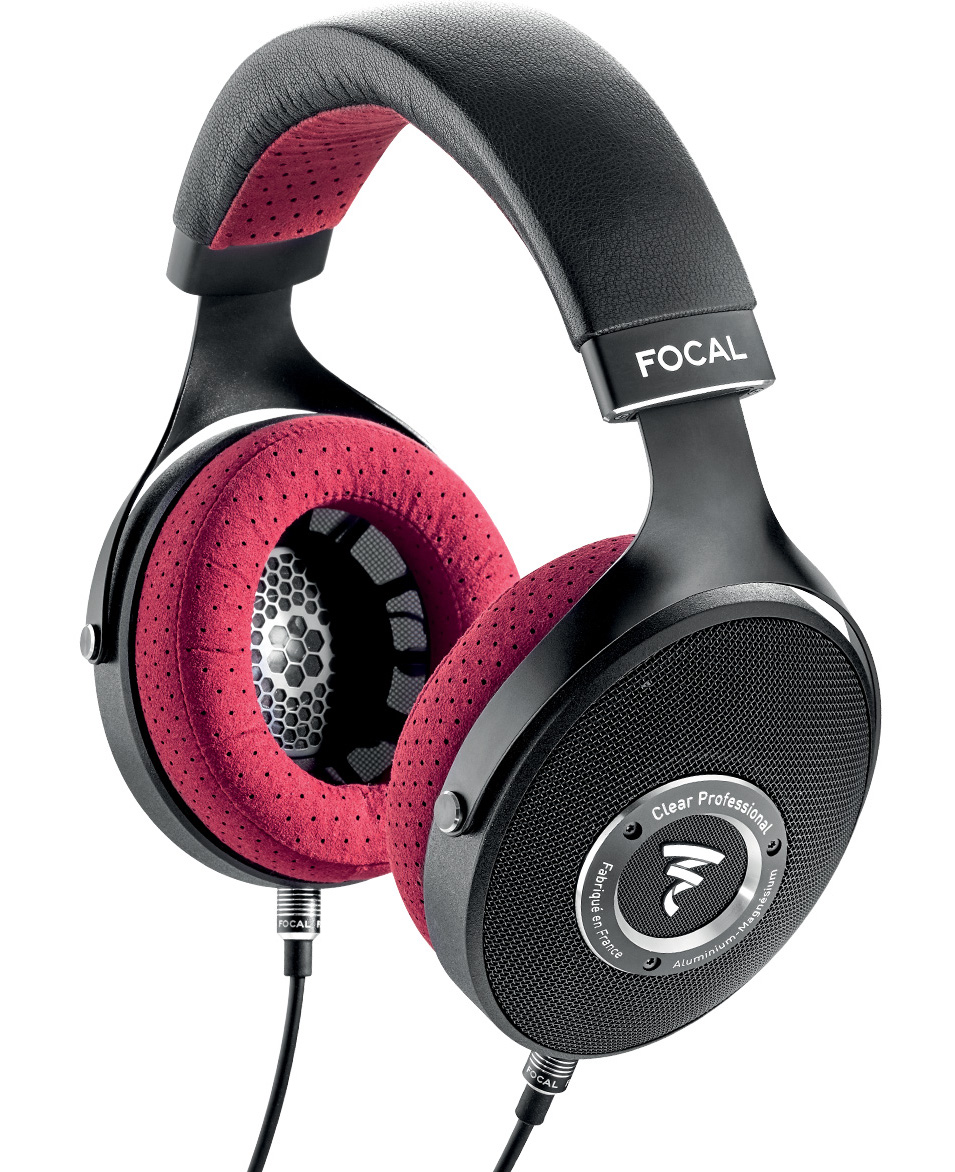
The Focal Clear Professional Headphones are a higher-end choice with a smooth sound that is excellent for critical listening.
The next entry is possibly the best-looking pair of headphones on this list, and for me, some of the most satisfying to listen to. We’ll get to the more “standard” fare in a minute.
Very quickly, I found myself absolutely falling in love with the sound, the feel and the look of the Focal Clear Professional headphones. If money was no object, this would absolutely be my headphone of choice for enjoyment listening and critical listening alike, and they would certainly be a great choice for general mixing duties as well.
As with all of the other Focal products I’ve tested so far, even unboxing the Focal Clear Pros was fun! Along with Universal Audio, Focal is one of those few companies in audio where opening up your new gear for the first time feels like an experience. They are easily on-par with companies like Apple in their focus on end-user experience.
Once you unbox the Clears, you’ll find that all the details are wonderful here, from the look and feel of the earcups, to the elegant hard carrying case, to the well-designed cabling. Putting them on does not disappoint either. They are extremely lightweight while still feeling satisfyingly substantial, they are endlessly comfortable, and they sound fantastic.
I found the Clear Pro model to be more than flat enough for serious critical listening applications, but unlike some other high-end models focused on neutrality, they sound fun too, rather than plain and clinical. They are tremendously clear, open, creamy, smooth. Pretty much any fancy-sounding adjective you can throw out there, and these headphones are it.
While these headphones are not the cheapest on the list at $1500—not by a long stretch—they are easily the best and most satisfying headphones I’ve ever heard or felt short of the Audeze LCD-4 model, which costs about $4,000. At a price of $1,500 or less, I’ve just never heard headphones I like better than these.
The only thing resembling a complaint that I could muster here is that part of what makes the Clear Pro model sound so smooth is that there is a slight dip in the upper midrange, around 3kHz or so. This is actually of some benefit when listening for long periods without feeling fatigued, but it’s something to be aware of.
While I don’t think this mild upper mid dip keeps them from being great for mixing, one must be mindful to remember that these headphones are supposed to sound smooth. You’ll want to avoid going too overboard with boosts in the upper midrange to get more “edge” out of things. A little bit of occasional referencing goes a long way in overcoming that most minor of tradeoffs without issue.
If you’re looking for much of this level of quality and smooth clarity at a lower price point, the Focal Elear model, marketed for hi-fi users, is also available at about half the price or less. The sound is different but also good, and the feel and build quality are similarly excellent.
Pros: Beautiful design, truly exceptional sound, extremely comfortable, includes hard case.
Cons: Somewhat expensive. Smoothness in upper mids requires mindfulness in not over-boosting those frequencies.
Winner: Most Neutral / Best Value
Sennheiser HD650 $400 or less
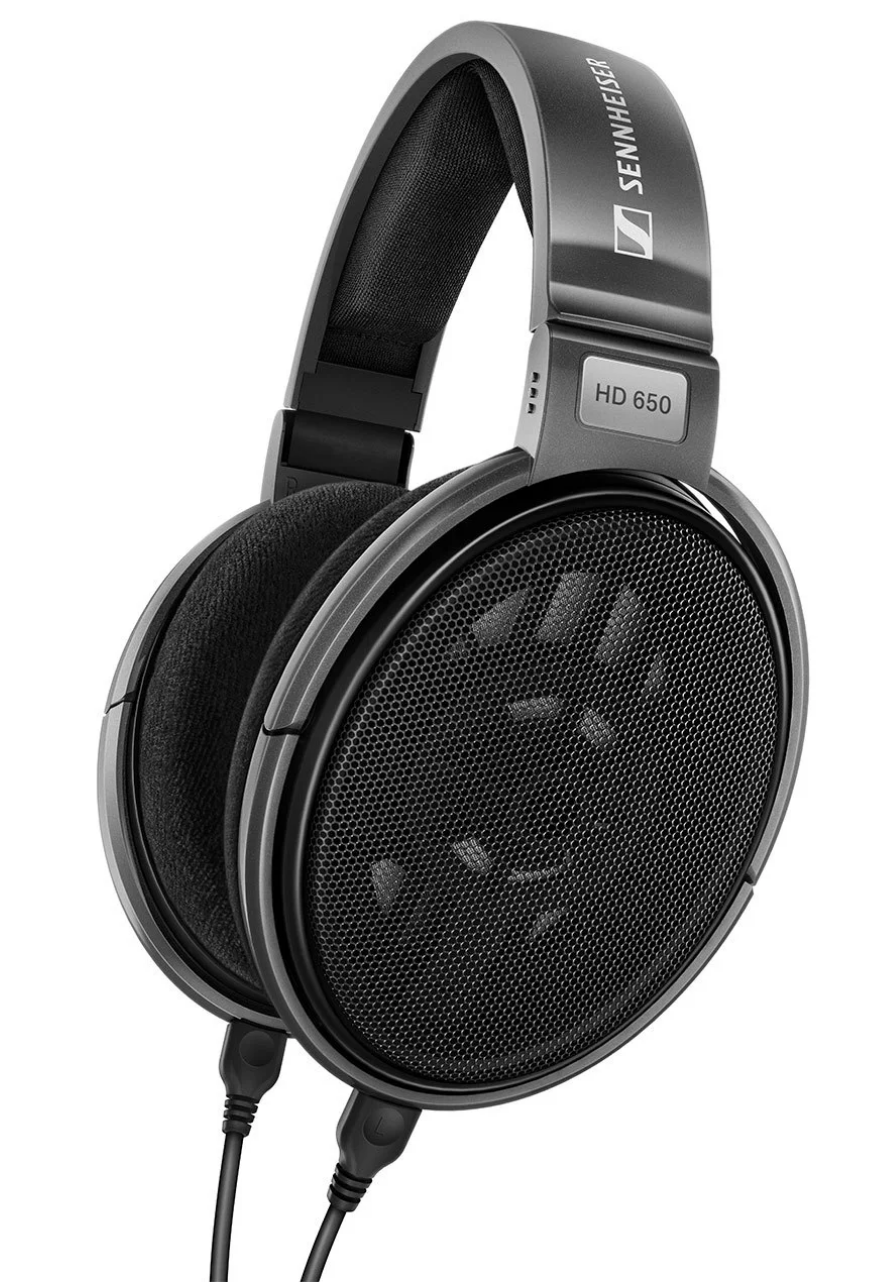
The Sennheiser HD650 headphones are one of the most popular reference-quality headphones for good reason. They deliver some of the more neutral mids and highs you’ll find at a still affordable price.
The flattest and most neutral headphones I’ve found under $400 so far are Sennheiser’s ubiquitous HD650 Reference Headphones. I’m seeing a variety of price points on this model these days, from $320 on some sites for the older grey finish, all they way up to $400 at many other music retailers. There’s also a new 6XX model that can be found for below $300 but is purported to sound basically identical.
These headphones are popular for good reason. They’re not overly expensive, and they are nearly as neutral out of the box as headphones can come.
These are probably as close to flat as you can get for referencing the midrange and top end, with just a slight dip in the upper mids. (If you prefer a tiny bit more “bite” in the upper mids, the slightly less expensive HD600 is said to have a little more emphasis there.)
It’s hard to go wrong with the Sennhieser HD650. They just leave me feeling a little… uninspired at times compared to other options. They have a higher impedance than many of the other selections here, meaning that they are a little bit on the quiet side without a good dedicated headphone amp, and you may have to crank your level a little compared to some other options.
The HD650 wouldn’t win any contests for being the best looking, most comfortable or most durable higher-end headphones out there, although they are not particularly lacking in any of those departments either. Their design probably doesn’t make them the best travel headphones due their lack of collapsiblity, and the fact that they come with a fairly nice carboard box, rather than a sturdy hard travel case like some of the other options here.
There are a lot of great things about the HD650. If you haven’t heard open-back headphones in this pricerange before, you’ll almost certainly be impressed by how well they perform. If any parts due wear out over the years, replacements are readily available and they are easy to service. These headphones are just very, very good. They are perhaps a little bit on the utilitarian side compared to some other options, but they are an unmistakably great value, even compared to some similar headphones I preferred more, which we’ll get to in a minute.
The only place where this much-lauded model fails to meet expectations for me is in the low end. They won’t really tell you anything about the subs at all. Below 100Hz, there just isn’t much information there, and the upper bass from 100-200Hz+ is a bit over-represented by comparison, making them less than ideal for those looking for a low-end doublecheck out of their headphones.
To be fair, this is a tall order for any headphones, and only a handful, like the Blues, Focals and maybe the Shure SRH1840s (which we’ll get to next) have a significantly more pleasing and more useful low end to my ear.
Ultimately, it depends on what your needs are. If you have a great speaker system to rely on for low end, and you don’t need headphones to serve as an additional low frequency check, or as an on-the-go solution for low-end reference, the 650s could serve you very well.
Pros: Popular for a reason. Great value. Very even midrange and top end for headphones. Very serviceable, with easily available and affordable replacement parts.
Cons: Lacks low bass, while upper bass is slightly over-represented. Slight dip in the upper midrange requires mindfulness in not overboosting those frequencies. Not the best option for travel due to design, lack of hard case and durability concerns.
Most Balanced / Best All Around
Shure SRH1840 $500
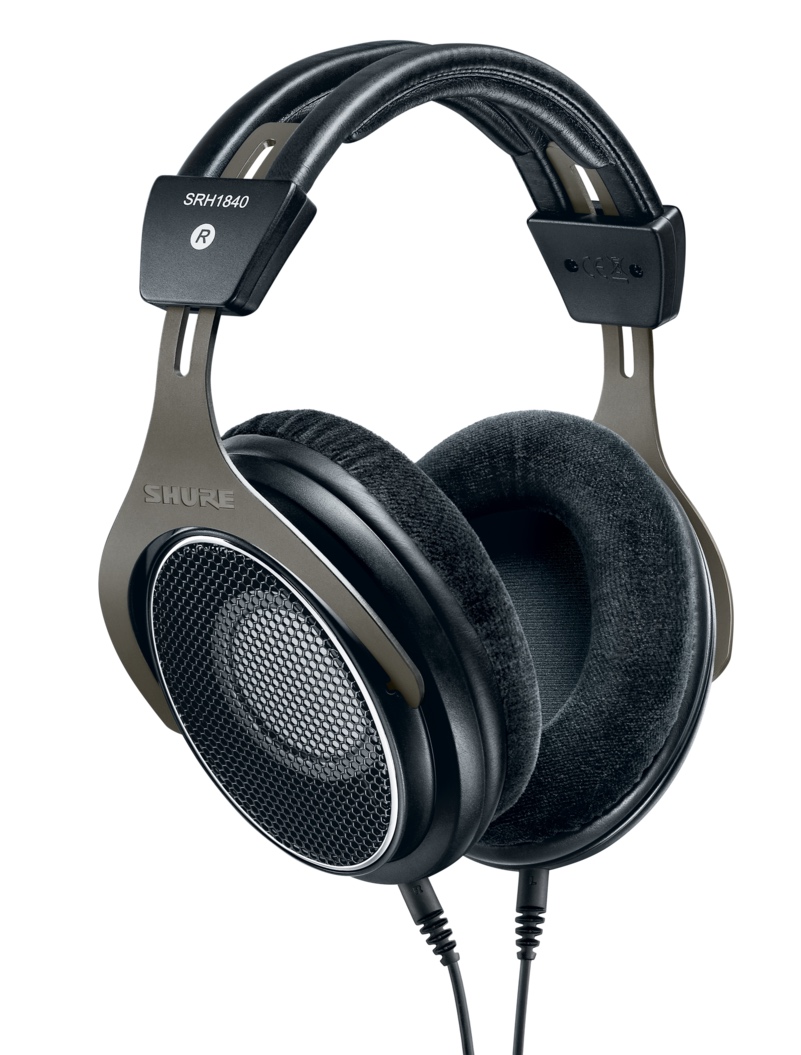
Shure’s SRH 1840 Headphones are some of the most well-rounded headphones you’ll find, excelling in just about every category while still offering a good value.
Another pair of headphones that really stood out to me in my tests was the Shure SRH1840 model. In my estimation, these are like an all-around “better” version of the Sennheiser HD650s, and offer a lot of the best qualities of other models mentioned earlier in a single package.
These are truly one of the best balanced options in the headphone world, and I was surprised by how much I liked them.
The SRH1840 headphones have extremely useful low end, though they may have slightly less energy in the subs than the Blue Mix-Fi.
Like the Focal Clear Pro, they have an extremely comfortable feel, a smooth and non-fatiguing sound, and a little touch of style, though not quite as much so as the Focals.
They have the neutral and trustworthy mids and highs of the Sennheiser HD650s, and are a good value for all they offer, though perhaps not to the same extent as the Sennheisers.
If you want headphones that have some of the best features of all of the other ones mentioned here, it’s hard to find a model as good and as balanced in that regard as the SRH1840.
At $500, these are not the cheapest nor the most expensive on this list, but if you have $500 much to spend, it’s unlikely to be a purchase you’ll ever regret. If you have trouble deciding between all the models here, and having a super-tight budget isn’t at issue, then just get these. They’re great, and they will not disappoint.
After hearing the SRH 1840, I couldn’t figure out why people don’t talk about these at least as much as the Sennheiser HD650s. Is it just the slightly higher price tag?
Though the value may not as exceptional as the Sennheiser 650s, I have to admit that if someone offered me a free pair of these Shures right now, or a free pair of the Sennheisers, plus $100 cash, I’d probably take these Shure headphones. But your preferences (and the degree to which you could really use an extra $100) may be different! So do what makes sense for you.
One last thing worth noting is that they do come with a nice hard case, giving them a slight leg up in value from where they otherwise might land.
Pros: Excellent sound with useful low end, and neutral but pleasing midrange and highs. Fantastic balance of features for a extremely well-rounded offering. Comes with an attractive complement of accessories, including a hard case for travel.
Cons: Not as affordable as some similar options. The Sennheister HD650 or Audio-Technica ATH-R70X (dicussed below) may have a leg up on value for the budget-conscious. They feel luxorious, satisfying and fun compared to other offerings at a similar price point, though not as much so as the Focal models or other offerings from more hi-fi oriented brands.
Runner Up: Best All Around
Audio-Technica ATH-R70x $350
Beyerdynamic DT1990 $600
Two additional headphones that were very similar in design to the Shure SRH1840 but that don’t get quite as high marks in my personal evaluation are the Audio-Technica ATH-R70x and Beyerdynamic DT1990.
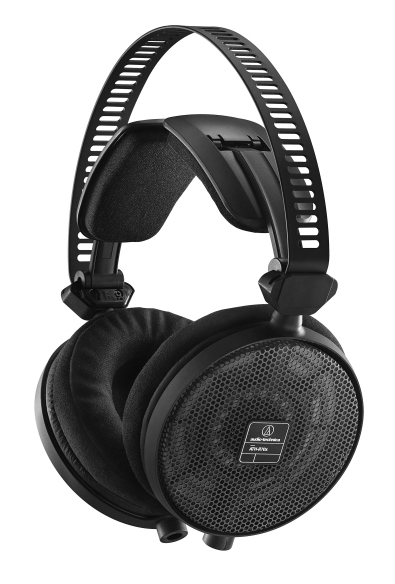
Audio Technica’s exceptionally lightweight R70X are a good value option that some listeners may prefer to the Sennheiser HD650s—and at a slightly lower price.
First, a word on each of their strengths: The Audio-Technica R70X were very good-sounding headphones for the price, and there were things I liked about them almost as much as the Shures… just not quite.
Of course, they also cost considerably less than Shure’s similar offering, which could easily tip the scales for some buyers.
They were extremely lightweight and comfortable, and had pretty good bass and fairly neutral top end. They didn’t excel in quite the same way as the Shures for my personal tastes, but for $150 less, they are certainly a worthy contender.
The place where you feel the cost cutting on the R70X the most—fortunately—is in the boxing and accessories, which was about the most underwhelming of all the models I auditioned in this class.
In Audio-Technica’s defense, this is probably a far better place to cut costs than any others. It just didn’t inspire excitement and confidence in quite the same way as some of the other higher-end unboxing experiences.
Sonically, I’d put them just after the Shure SRH-1840 for my tastes, and perhaps little ahead of the Sennheiser HD 650—depending on what day of the week you ask me. They offered what was potentially a superior low end to the Sennhesiers for my ears, even if they were a shade behind the fantastically even and smooth performance on both bottom and top found in the Shures.
The Beyerdynamic DT1990 gets high marks for comfort, build quality and style as well. To my ears, they just didn’t have a top end or midrange that was quite as even and trustworthy for mixing and critical listening as the Shures or Audio-Technicas, and the frequency response charts I’ve seen seem to agree. They could be a great option for hi-fi listeners looking for great feel and fun sound, but they didn’t speak to me in that regard quite as much as the Focals.
With that said, headphones are a highly personal choice, and some listeners may prefer the Beyerdynamics over others on the list. If you try them and really like them, or have a brand loyalty to Beyerdynamic, have at it! Although I’d choose others ahead of them for my tastes, they certainly have sufficient build quality and sonics to be a reasonable competitor in this category.
Runner Up: Most Luxurious / Most Fun
Ollo HPS S4 $360~
If you want some headphones that are exceptionally comfortable, light, stylish and fun, but you don’t want to spend $1,500, then the OLLO HPS S4 model might be a good bet for you.
These headphones are actually among the least expensive on this list at just about $350 in USD, but they are appointed like higher-end hi-fi headphones in some ways. They have a classic look with a beautiful walnut wood finish, reminiscent of the Grado line, and they are very lightweight and comfortable.
Though the company boasts about the flatness of their headphones, I found that they were a little bit more hyped than flat in use, though in a pleasing and detailed way. They felt a little bit amped up in both the lows and highs to my ears, which on the positive side, gives them the sense of offering plenty of articulation and excitement.
As far as neutrality is concerned, they are far better than most closed-backed models you’ll find. So if you’re looking for a little style out of your headphones and a little excitement out of their sound without going overboard, then these are a good bet for that. They don’t quite compete with the nuetrality of the Sennheisers or Shures, but that’s not what I like about them.
OLLO also offers a closed-back version that I have recently been using on every interview episode of the SonicScoop podcast because of how light and comfortable and good-looking they are. The closed back S4R model make for a superb tracking headphone for a studio that wants a little more style and excitement than the average fare.
Another plus is that the design here is so simple that they are extremely serviceable headphones if you run into issues of wear over time. My one complaint with these is the headband design. They can resonate a little bit if you bump them, and I found the black finish on mine started to peel slightly over months of use. The company reports that they are aware of this complaint and working on fix. Finally, they are not the most collapsible models you’ll find, making them a far better studio model than a travel pair.
Pros: Great style at a good price, excellent comfort, easy to wear for long periods, pleasant amount of sonic hype without going overboard.
Cons: Slight “smile” curve in the EQ is less than ideal for critical listening. Not easily collapsible for travel. Headband can ring audibly if struck. Finish on headband can peel slightly over time.
Final Thoughts
The best thing you can do is try some of these headphones out for yourself. I hope that at the very least, this list helps you narrow down your choices, and and provides some context for making your choices.
If you want great bottom end out of your headphones at a great price, the Blue Mix-Fi are hard to beat. And if you want something a little more conventional that has great bottom, great top, and good style, the Shure SRH 1840s would be one of my top recommendations.
The Sennheiser HD650s are popular for a reason and offer a great value for a pretty neutral midrange and top end. The Focals offer tremendous style and appointments for a premium price, and the OLLO S4 bring some hi-fi feeling fun to the table for a real bargain.
Justin Colletti is a mastering engineer, author and educator. He edits SonicScoop and hosts the SonicScoop Podcast. He is the creator of the full-length courses Mixing Breakthroughs and Mastering Demystified.
Please note: When you buy products through links on this page, we may earn an affiliate commission.








[…] But in evaluating some of the latest top-of-the-line models, I was amazed at just how much you can learn to trust some of the very best pairs Read more… […]